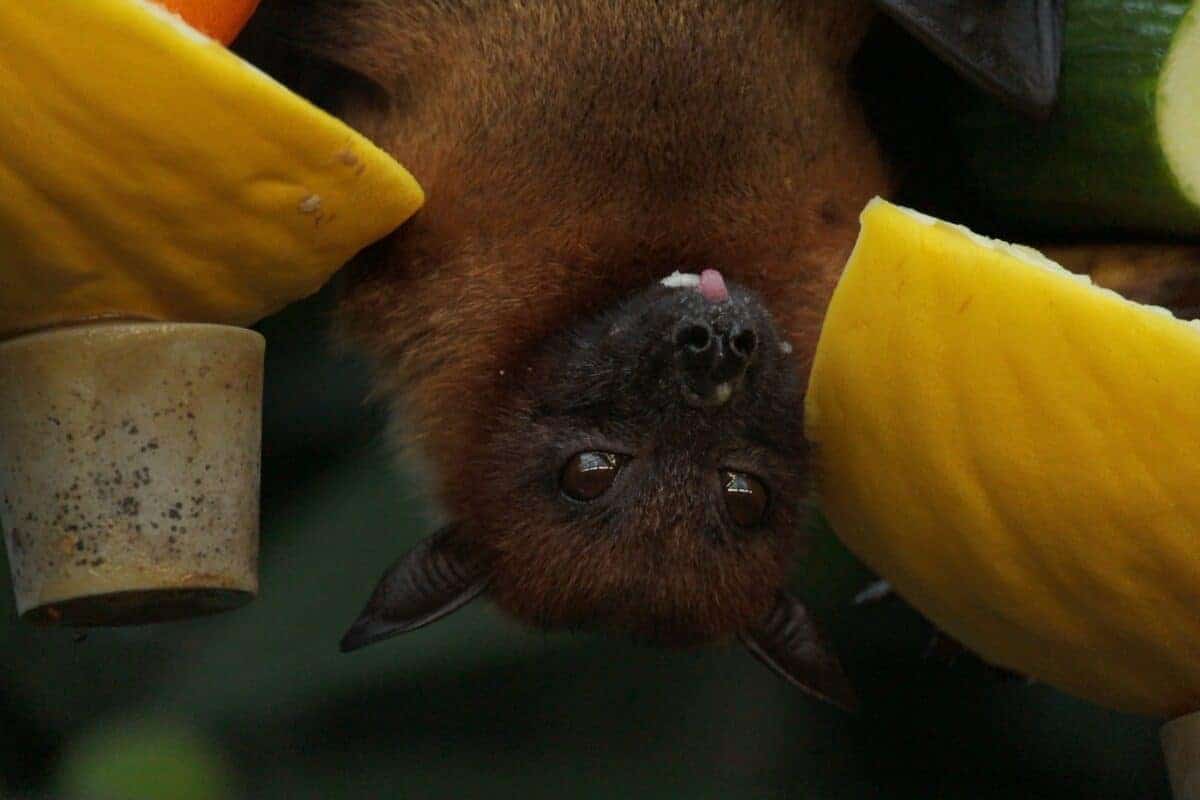Historically bats have been associated with vampires and blood-sucking, and so their adorableness has been overlooked. Today we’re going to rectify that, let’s take a look at the cutest bats that inhabit our planet!
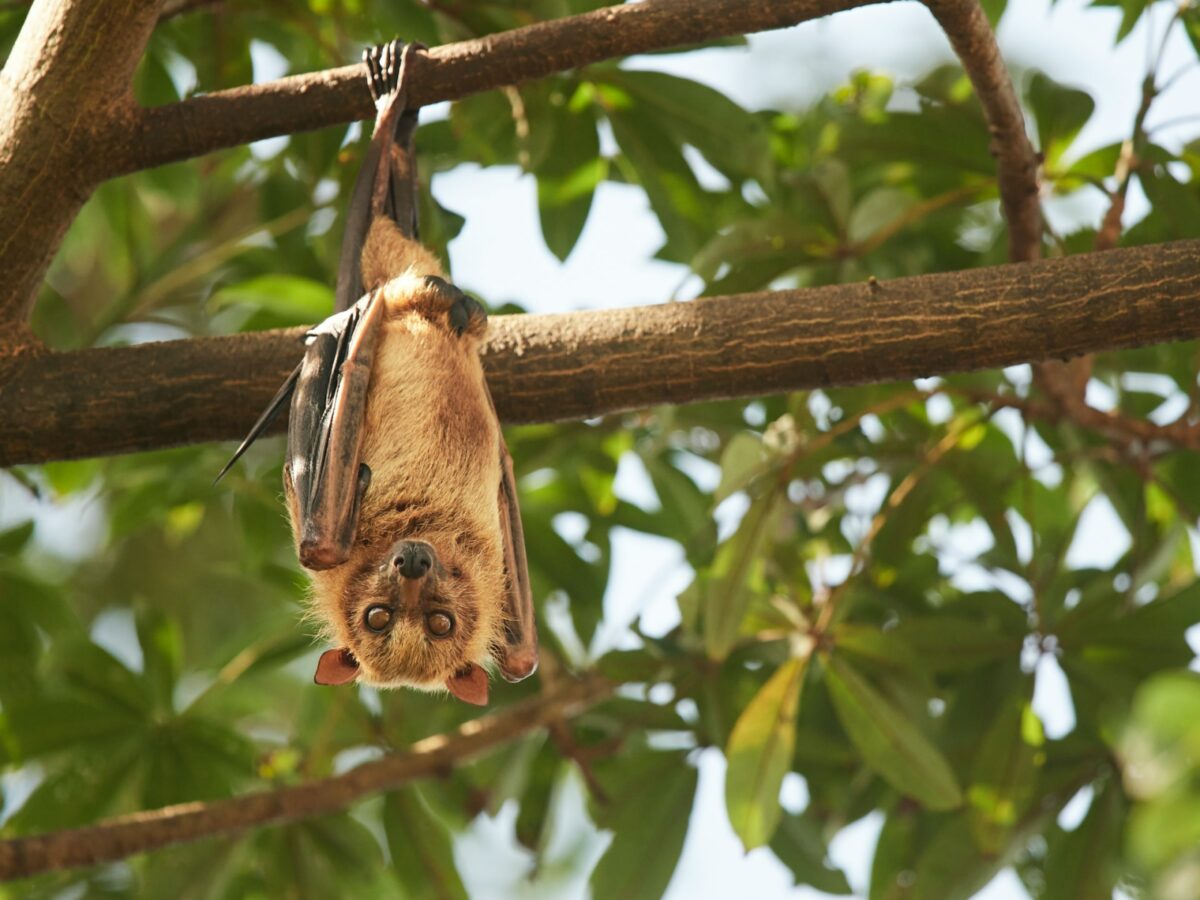
The nature of bats is often misunderstood. Their cute, furry look does not match the image they’ve gained through their features in scary stories and myths. If you can get past the bat superstitions, you’ll discover that many species of bats are pretty adorable.
These flying mammals play an important role in the animal community. They are incredible bug catchers and play an important role in ecosystems worldwide. Currently, there are about 1,400 different bat species worldwide.
There’s a large variety of sizes and shapes, and some bats have wingspans that are longer than the height of an average human. In contrast there are also tiny bats about the size of a human hand. Many species of these cutest bats are round, fluffy, and quite adorable.
Let’s have a look at some of the cutest bat species around the globe:
#1 Honduran White Bat
This tiny animal is one of the cutest bats on the list. The Honduran white bat is a highly adapted Central American species. This bat is one of the few species whose fur is also white. In addition to having white fur, its wings have a yellow outer portion and a grayish-black inner portion.
They also have yellow or amber ears and nostrils. Its wingspan is approximately four inches, and they only measure 1.46 to 1.85 inches long. During the day, up to 15 of these tiny bats sleep in “tents” together. They use young heliconia plant leaves to create those tent-like structures.
These bats appear at night in search of food, which is uncommon for small bats because they’re frugivores who like eating figs. The Honduran white bat is highly vulnerable to deforestation because of its uncommon housing and nutritional needs.
#2 Little Brown Bat
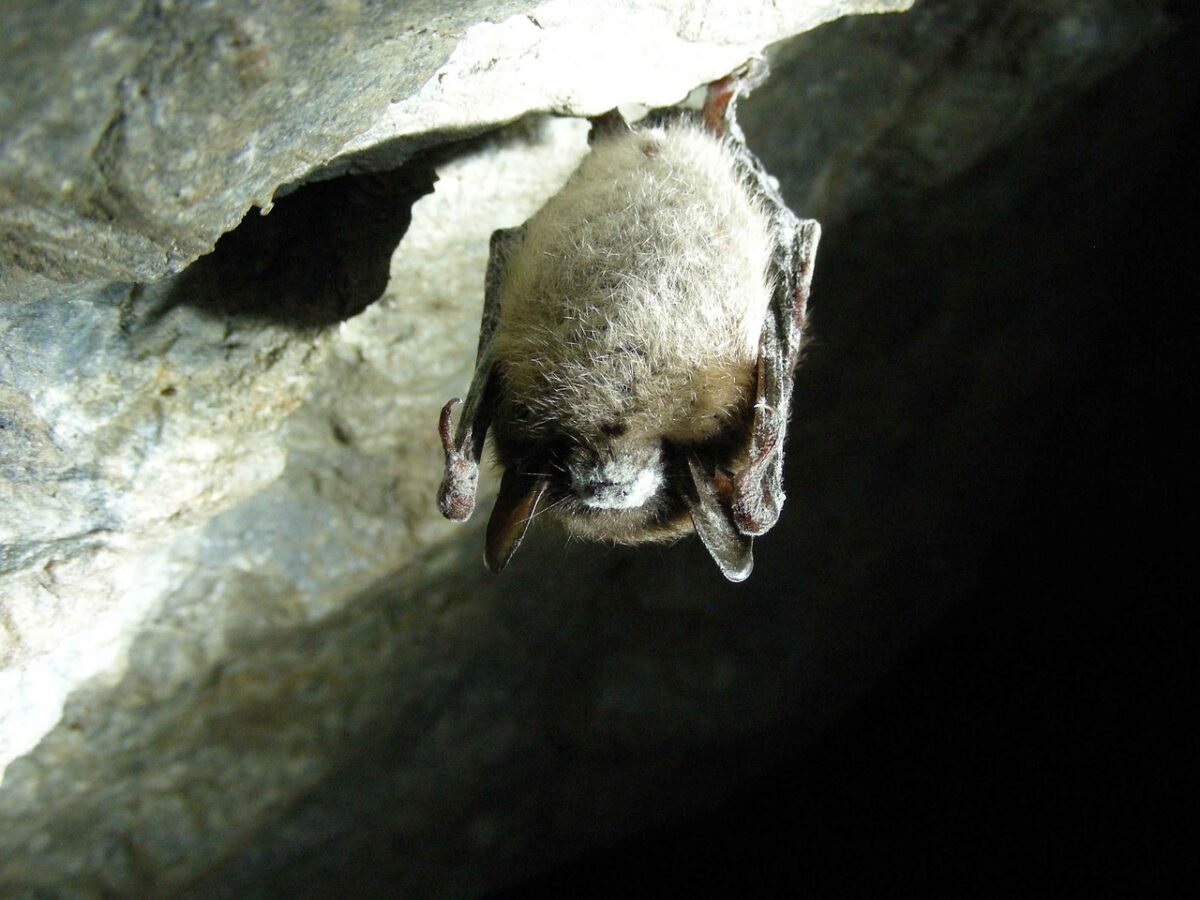
The little brown bat, scientifically known as Myotis lucifugus, is one of North America’s most common bat species. The size of this little creature is about two inches, and its wingspan is six inches. Its fur is thick and lustrous and varies in color from tan to chocolate brown.
Although its ears are a little longer than most mice, it belongs to the group of microbats with mouse-like ears. The little brown bat is one of the longest-living bat species, having an average lifespan of over 30 years.
Even though these bats are small, they are quite useful for pest control. Many farmers may construct bat houses to use the creatures to control pests on their farms. A single small brown bat can consume 1,200 insects in a single hour.
#3 Peter’s Dwarf Epauletted Fruit Bat
These bats certainly deserve their spot on this list. Despite their small size of 2.64 to 4.13 inches, they are classified as a megabat species. Besides having big, adorable brown eyes and a lovely face, these small bats also possesses a thick fur covering.
The center of these bats’ ears has tiny white specks on their coat. Moreover, they have white fur tufts on their shoulders. Those tufts resemble the epaulets frequently seen on uniforms worn by soldiers.
These fruit bats inhabit trees and bushes and can be found across several Central African nations. They consume fruit, insects, and nectar for food. Being a nectar consumer, they are essential plant pollinators.
#4 Egyptian Fruit Bat
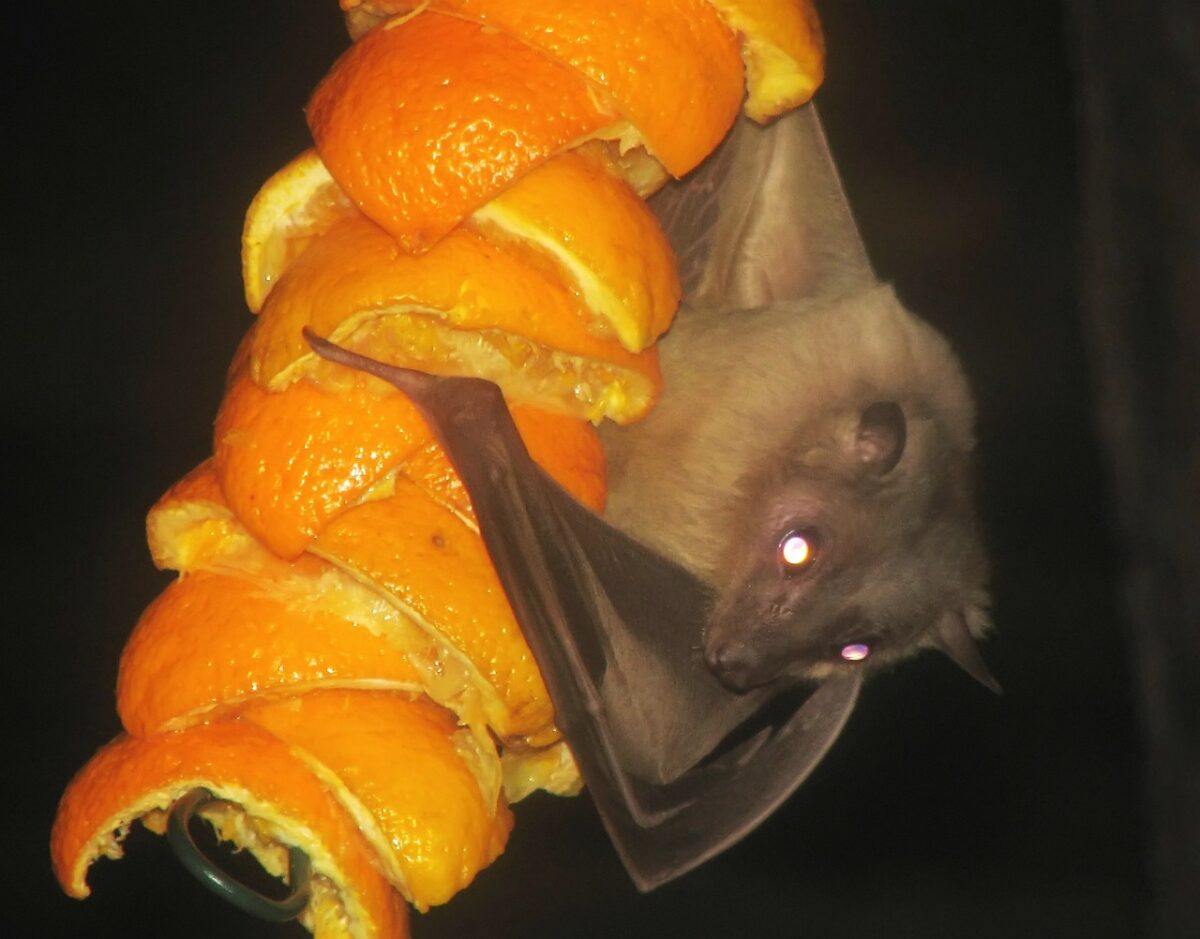
Large populations of Egyptian fruit bats can be found throughout India, the Middle East, and Africa. Its scientific name is Rousettus aegyptiacus. It is a family of 197 enormous fruit-eating bats known as megabats.
Their 2-foot wingspan makes them a megabat species of medium size. Being a very social creature, it frequently roosts in large numbers in caves.
Typically, megabats are thought to be adept sonar hunters. However, the Egyptian fruit bat is one of the few megabats that use a primitive navigation system.
#5 Giant Golden-Crowned Flying Fox
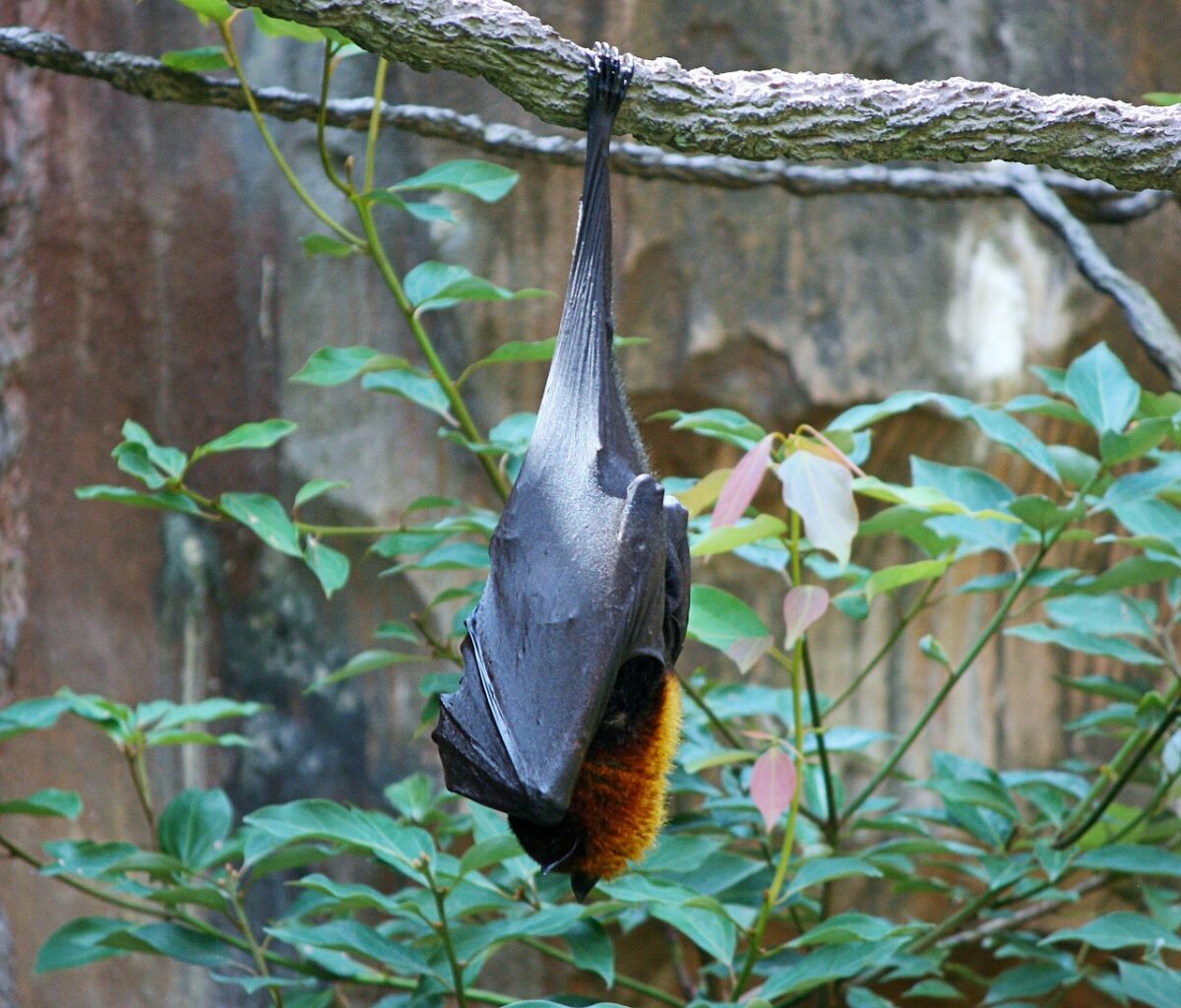
The massive golden-crowned flying fox has a 5.5-foot wingspan and can weigh up to 3 pounds. They may appear scary at first, but upon looking closer, they resemble a child’s soft toy rather than a vampire. This species is found in the Philippines and primarily eats fruit.
It navigates at night using its big eyes. Like many other flying fox species, the big golden-crowned forms impressive roosts in trees. For a naturalist, these are impressive sights, but they also put flying foxes in danger.
A lot of their roosts have sadly been logged because people often hunt them for their meat. Their survival is one of the top conservation priorities for Bat Conservation International. They are collaborating with local organizations to protect these roosts.
#6 Common Pipistrelle
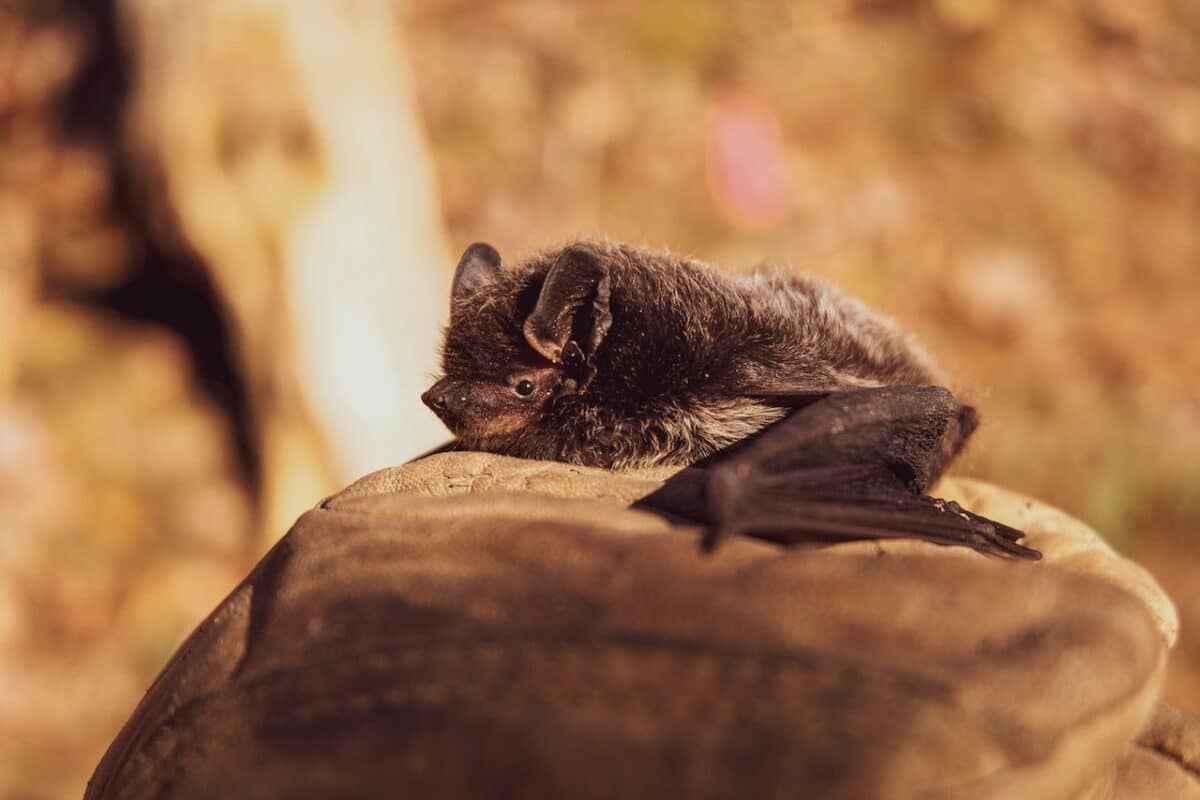
This little bat has a cute appearance and a cute name. It is widespread across Europe, the United Kingdom, North Africa, and most of Asia. The frequency of their echolocation sounds helps to differentiate the two species.
The soprano pipistrelle calls at 55 kHz, compared to the common pipistrelle’s 45 kHz. These bats have a length of 1.09 to 1.27 inches and a wing span of 7 to almost 10 inches. They feature wide-set eyes, short ears, reddish-brown fur, and black wings.
Also, they frequently inhabit farms and wooded areas, where female bats like to nurture their pups. Pipistrelles often develop large maternity colonies during their breeding season, similar to many other bat species.
#7 The Indiana Bat
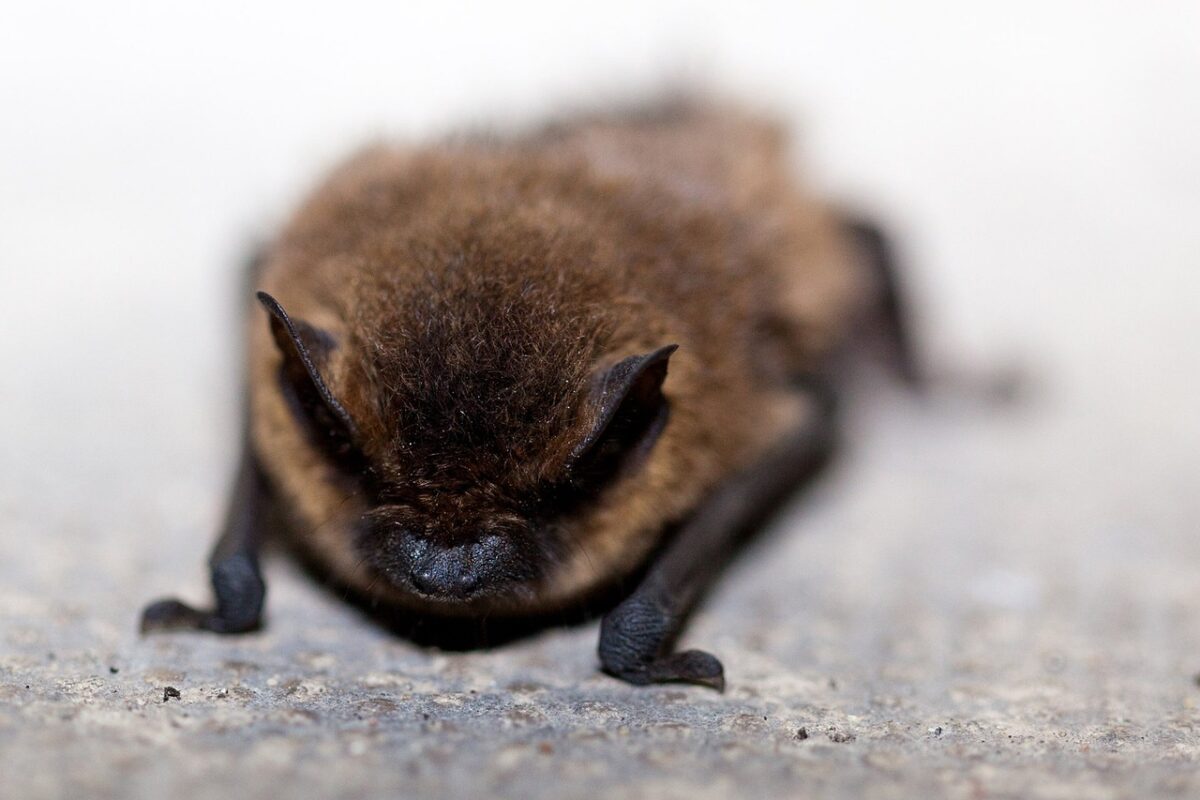
The Indiana bat is widespread in the eastern half of the United States. Its scientific name is Myotis Sodalis. “Myotis” refers to their mouse-like ears, while “Sodalis” means friend in Latin.
These little bats, which weigh approximately a quarter of an ounce, are incredibly small. Even though they are little, they are another excellent species for pest management. Each night, they can consume up to half of their body weight in insects.
This socializing bat species was discovered in Southern Indiana. Every winter, the majority of the species still go there to hibernate. The Indiana bat species’ hibernation colony size is exceptional. These little bats can form colonies that include 20,000 to 50,000 members.
#8 Red Bat
The red bat, also known as the western red bat, is found in South and Central America. When the weather becomes cold, these bats move to the tropics. Once the weather starts warming up in the earth’s northern hemispheres, they go north.
This species gets its name from the color of its fur. The color of the females is significantly more frosted than that of the males, who are brick or rusty red. White fur shoulder patches are present on both sexes, and the tips of several of the hair are white.
The bats will most often be found roosting beneath leaves in the forest. They do this to either eat or hide from predators. The bats hang upside down from a tree limb by one foot. In this way, they tend to blend in with their surroundings, often mistaken for dead leaves.
#9 Greater False Vampire Bat
The greater false vampire bat is found in humid rainforests of Southeast Asia and the Indian subcontinent. Its scientific name is Lyroderma Lyra, and its grey fur has a blueish hue to it.
As its name suggests, it belongs to the larger species of vampire bats. False vampire bats do not feed on blood; their name is a consequence of a previous misconception.
However, Lyroderma Lyra does have a special dietary option. It is one of only three bat species famous for consuming other bats.
#10 Little Yellow-Shouldered Bat
The name of this cute bat comes from the yellowish hair on its shoulders. It can be found from Mexico to Argentina, with a large population in Jamaica. This bat is unique because it frequently roosts on trees alone or in small groups.
It primarily consumes the fruits of nightshade-family plants. Their length ranges from 2.4 to 2.8 inches. The small yellow-shouldered bat has paler fur underneath and dark grey to mahogany brown fur on top.
Excretions from glands on the shoulders of these bats give the males’ fur their yellow color. Additionally, it has short ears, a leaf for a nose, and little to no tail. It does not hibernate and breeds all year around.
After four to seven months, the female gives birth to one very large precocial pup. The puppies become self-sufficient after one month.
#11 Mexican Free-Tailed Bat
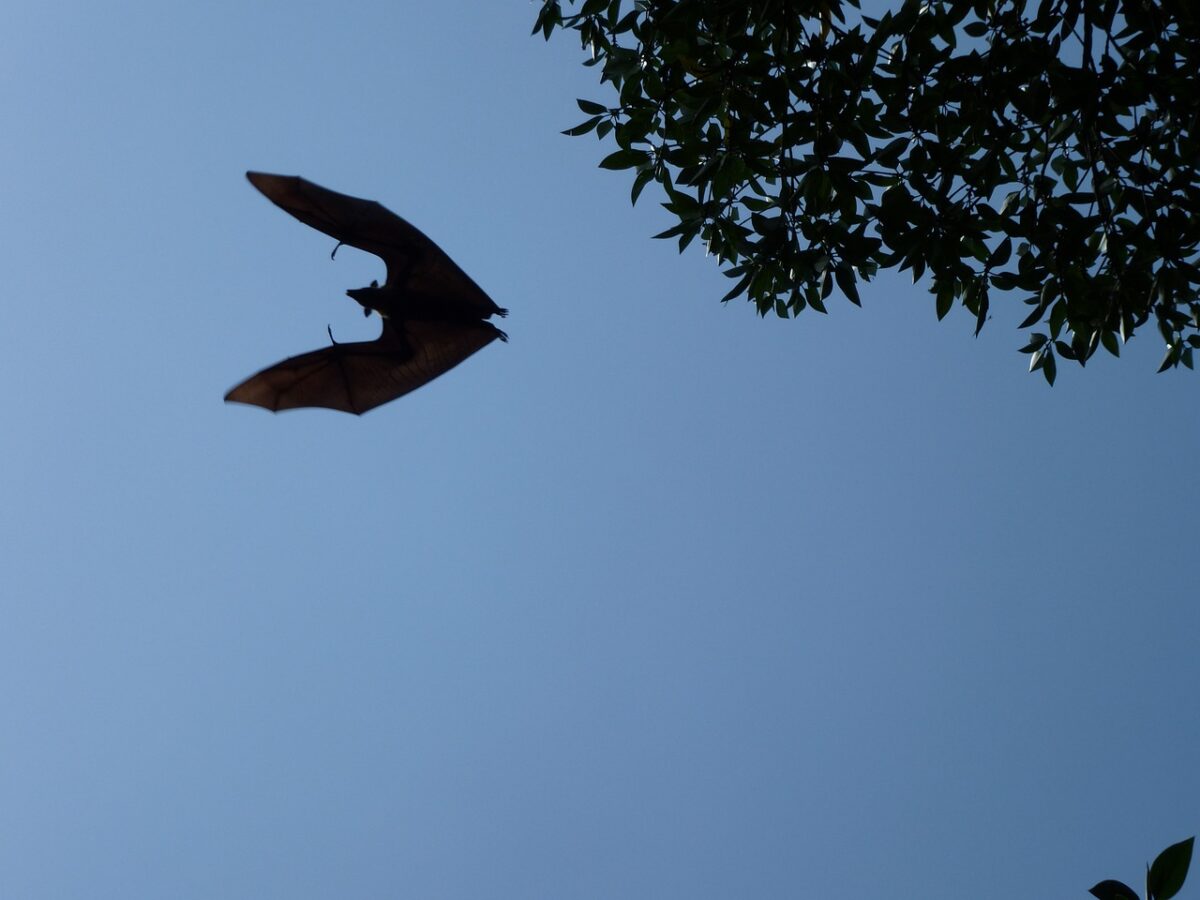
According to studies, the Mexican free-tailed bat can fly up to 100 mph, making it the world’s swiftest mammal by a wide margin. These bats don’t use the wind or dive to move at this speed; instead, they use the power of their wings.
This sets them apart from other well-known speedsters. Over extended distances, the Mexican free-tailed bat might be the animal kingdom’s fastest flier.
There are 15 to 20 million free-tailed bats living in Texas’ Bracken Cave. In addition, several other caves contain millions of these bats.
#12 The Hoary Bat
The hoary bat, also known as Lasiurus cinereus, is an elegant bat species. A thick coat with white tips covers this species of bat. Its wingspan measures up to 16 inches long, and it is well-known in both North and South America.
However, they remain completely hidden and are hardly ever seen. The solitary nature of hoary bats prevents them from coexisting in colonies with other bats. Instead, these bats find refuge high up in hollowed trees and occasionally deep cracks in cliffs.
Hoary bats start to travel south in the winter to stay warm and to find new food sources. They migrate in groups, so you can see them if you’re awake at the right time.
#13 Northern Ghost Bat
The Northern Ghost Bat is one of only three bat species recognized to have completely white fur. These bats inhabit the Neotropical regions of Central America and Northern South America. You can quickly identify this bat by its medium size and pale white to light grey fur.
They also have a little thumb and a pouch at the membrane by their hind legs. Its vestigial thumb distinguishes it from other species in its genus.
The Northern Ghost Bat also features huge eyes, a hairless face, small yellow ears, and pink wing membranes. This insectivore is known to sing a distinctive song while eating.
#14 Lesser Horseshoe Bat
You can see this little bat in North African and European slopes and mountains. Its name comes from the face’s nose leaf, which resembles a horseshoe. The fact that it is tiny, 1.4 to 1.8 inches long, with a wingspan of 7.5 to 10 inches, contributes to its attractiveness.
Moreover, it merely measures 0.18 to 0.32 ounces in weight. As a result, it is the smallest horseshoe bat species found in Europe. It has soft, fluffy, grey fur. Additionally, its large, petal-shaped ears and wings are a gray-brown color. It is a quick flyer and enjoys making circles in the air.
Lesser horseshoe bats are solitary, except in maternity colonies. Due to its small size, it can squeeze into spaces too narrow for other bats to fit. It covers its body with its wings when it is hanging upside down.
#15 Wrinkle-Faced Bat
Many bats have unusual faces up close, but none more so than the rightly named wrinkle-faced bat. Even though it has a scary appearance, this bat solely eats fruit. Research is still underway to determine the exact function of this complex face structure.
According to one study, the wrinkles assist in focusing the bat’s sonar. Others claim that as the bat consumes overripe fruit, the creases channel liquids. Another claim is that male bats are more seductive to females because of their intricate wrinkles.
This bat’s bite is considered powerful. It enables it to consume hard or unripe fruit that other bats cannot consume.
#16 The Evening Bat
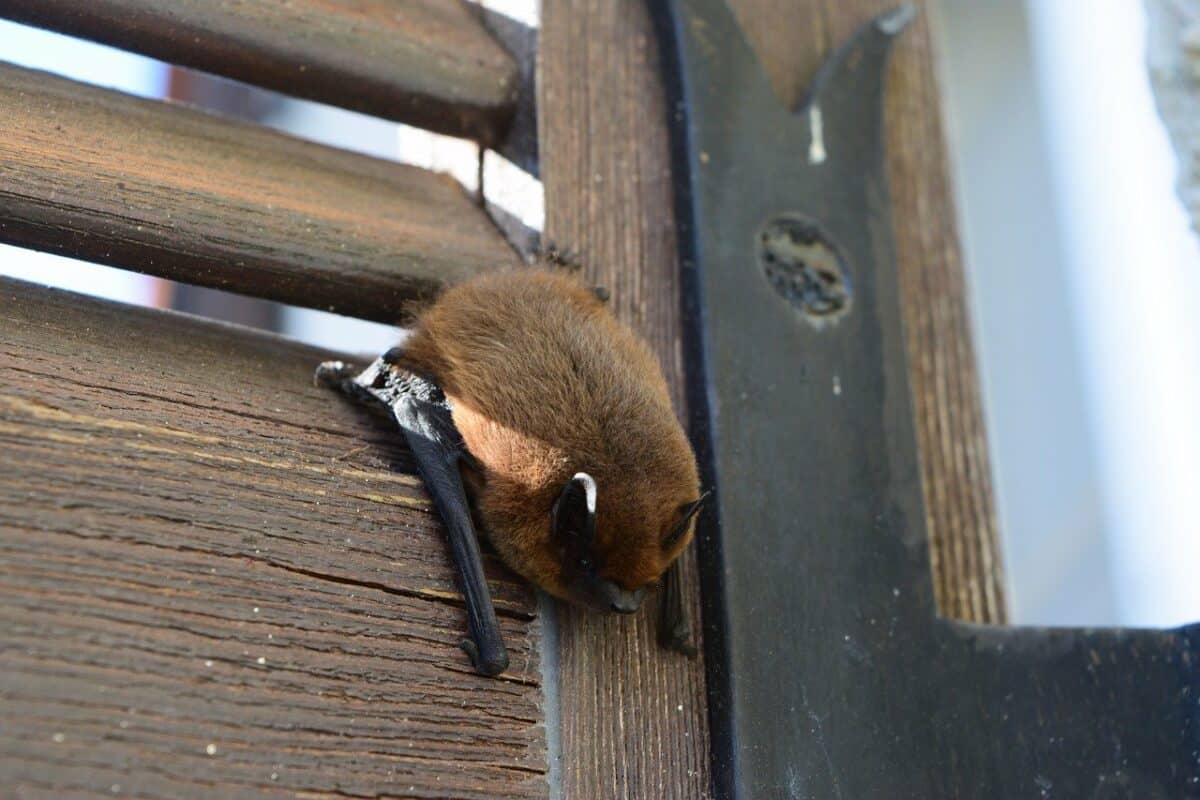
The Evening Bat resides across the Midwest and Eastern United States. It is scientifically named Nycticeius humeralis. Due to their physical similarities to young big brown bats, these bats are frequently confused.
However, the shape of their ears makes them easily identifiable. Although not found in caves, the evening bat species find refuge in trees and woodlands. For their winter trip south, these bats will store fat in their bodies to survive.
These bats’ reproductive practices are one of their distinctive characteristics. The Evening Bats can have three pups a year, which is uncommon for bats. This might be a factor in keeping a stable population despite their short lifespans.
#17 Sulawesi Flying Fox
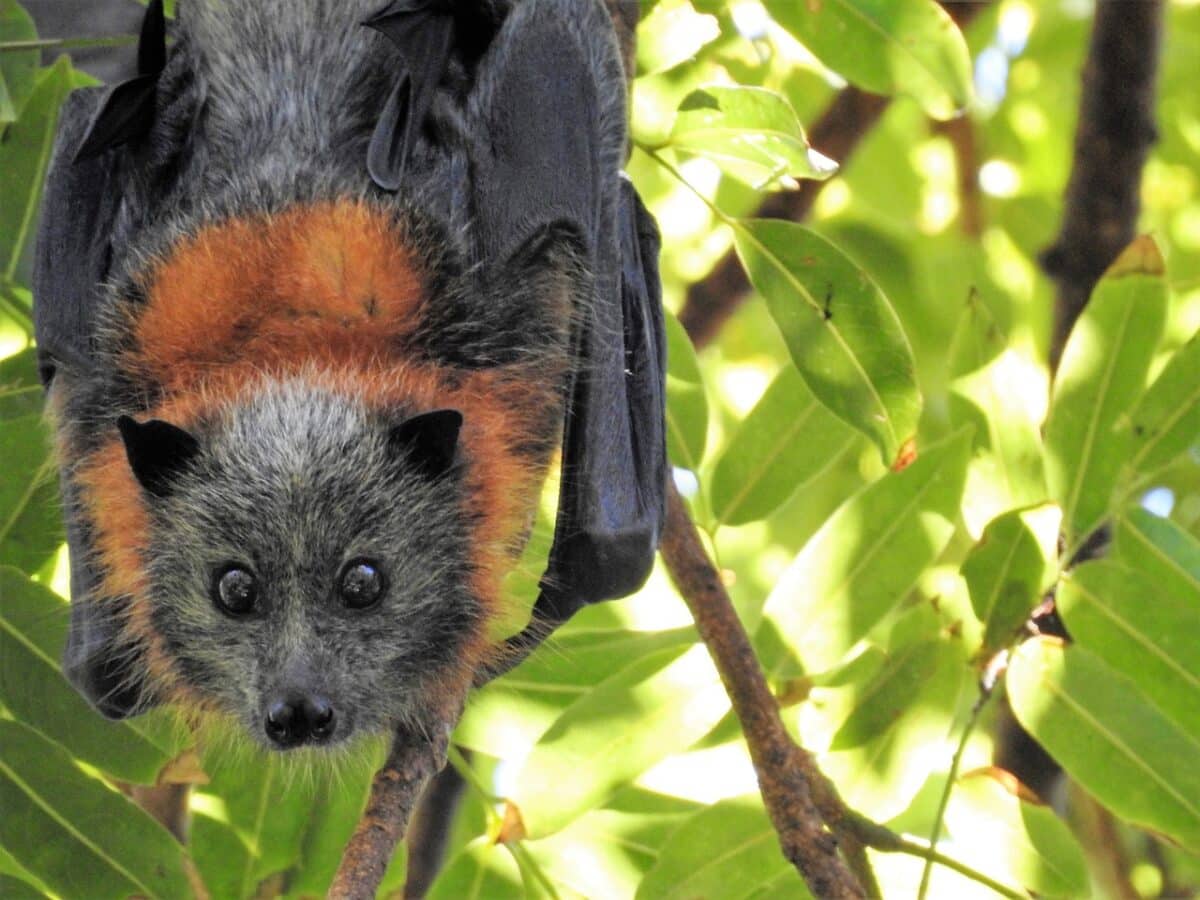
The Sulawesi Flying Fox has a face that almost resembles that of a fox, with a long, sharp nose. It lives in Indonesia’s Celebes Islands and has a white face and red-brown fur.
Their wingspans are roughly 18 inches long and they weigh only about two ounces. They are also famous for their friendly nature. The Sulawesi flying fox mostly eats breadfruits and coconuts.
Their preferred habitat is close to mangrove woods, so they can quickly locate their next meal. Typically, these species live in vast communities known as “camps.” The young bats interact back at camp while their mothers travel to hunt for food.
#18 Heart-Nosed Bat
Despite its attractiveness, this cute bat with long blue-gray fur is a deadly predator. Although small — only 2.8 to 3.0 inches long — it can easily take on giant animals like lizards, frogs, rats, and mice.
Even smaller bats are no match for it; it grabs them and uses its wings to pound them to death. It can also lift off the ground and transport objects that are almost the same weight as itself. During the dry season, the heart-nosed bat feeds on beetles.
Another feature of this bat is that it sings to establish a territory. The female does the majority of the childbearing. However, it is believed that the father’s singing deters intruders and protects the family and the surrounding area.
Conclusion
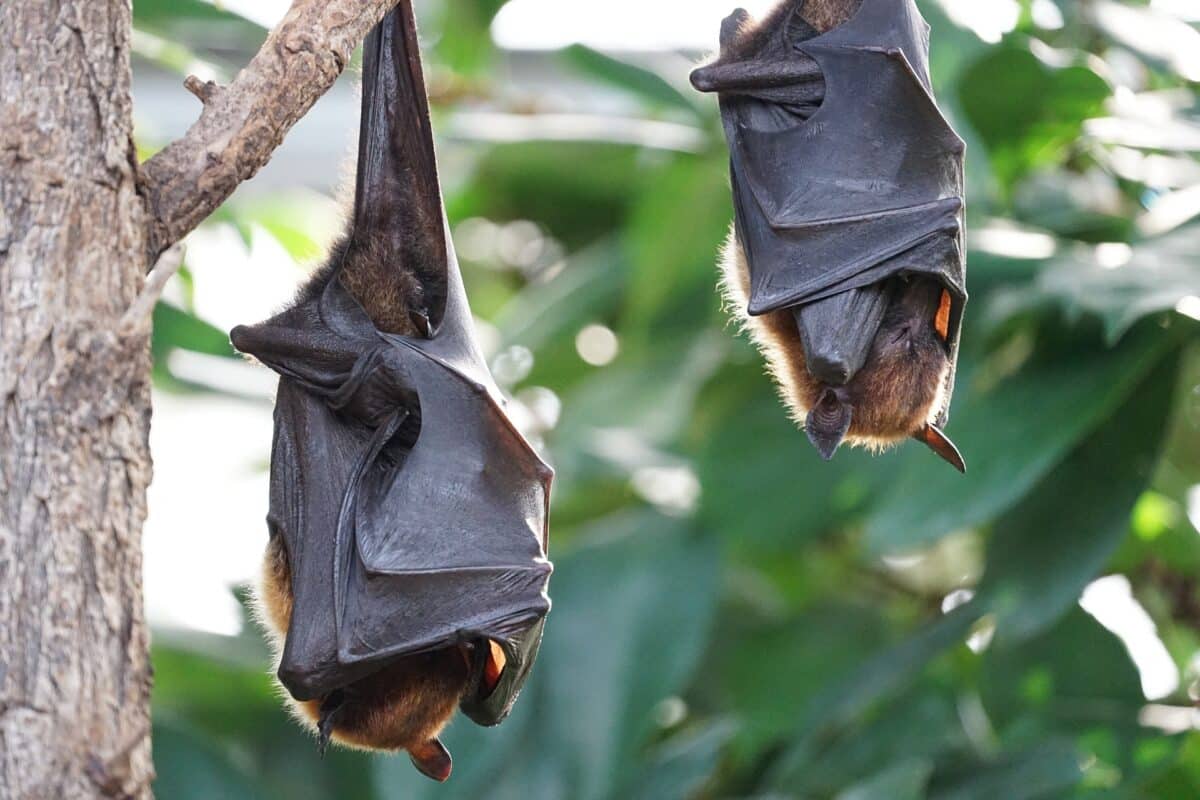
Summary:
| 1 | Bats were quite misunderstood in the past, and several myths were associated with them. |
| 2 | Although most of the bats look scary initially, many people find them cute upon closer interaction. |
| 3 | There is a huge diversity in coloration, facial features, size, habitat, and feeding habits of bats. |
| 4 | More than 1200 species of bats exist in nature, and most of them are indeed quite adorable and cute. |
| 5 | Bats are traditionally divided into two broad categories, megabats, and microbats. |
| 6 | Bats play an important role in maintaining a balance in our ecosystem. |
Bats are incredible creatures. But they have been hated and feared for a very long time. Very rarely do people think of bats as cute, but today’s conservationists regard bats as fascinating creatures.
Most of us will likely have brief encounters with bats as they fly around dusk. The color, facial features, size, habitat, and eating habits of bats are incredibly diverse, as can be seen by taking a closer look at them.
There are around 1,400 different species of bats. So, selecting the cutest species is undoubtedly a hard decision. Here we have given a detailed insight into some really cute bat species. Which one do you find the cutest? After all, they’re the dogs of the sky.
Thank you for reading this article! Are you ready for more cuteness overload? Head over to read about the Top 10 Cutest Fish in the World.
Join our Forum for free today!

- Signs Of Coyotes Visiting Your Property - July 23, 2024
- Beware Of The Rabid Wolf Spider In The United States - July 23, 2024
- 12 Flowers & The Beautiful Birds They’ll Attract To Your Yard - July 23, 2024

